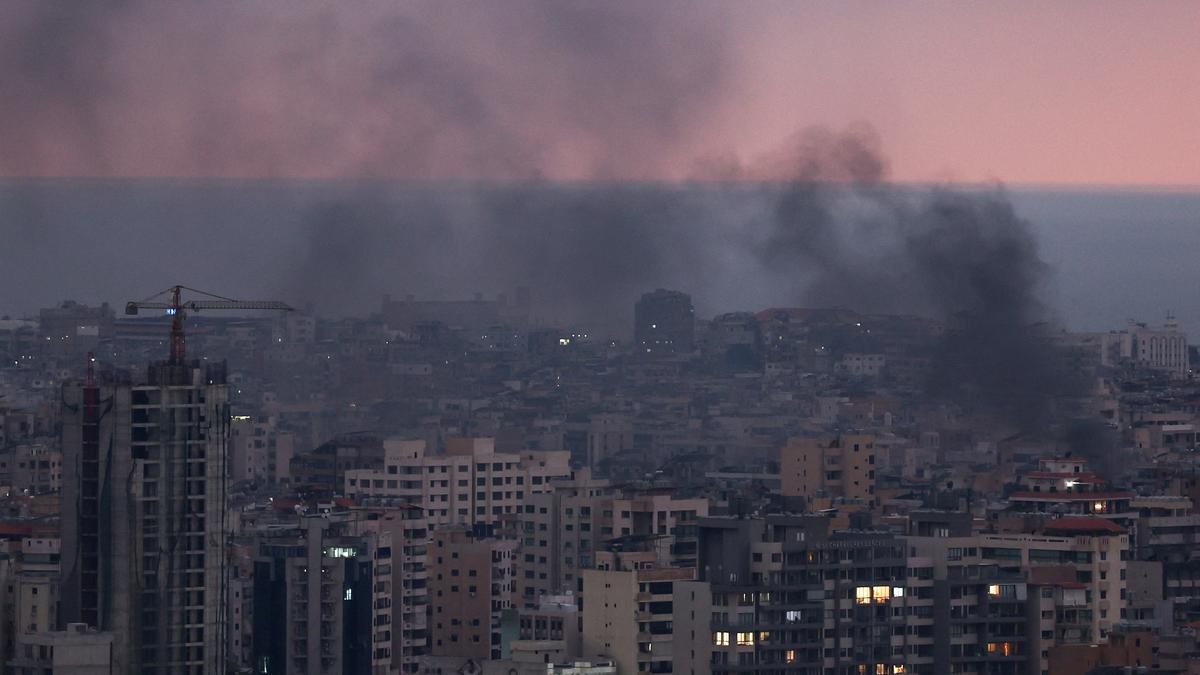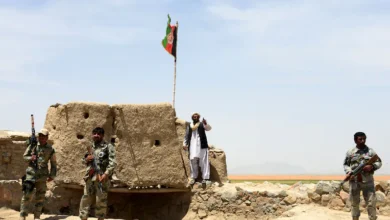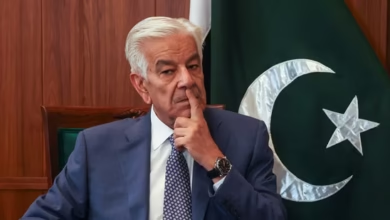Heaviest Israeli Air Strikes Batter Beirut

- The United Nations (UN) estimates that there is over 42 million tonnes of debris, which includes both standing shattered structures and flattened buildings.
- The UN is attempting to assist as Gazan authorities decide how to deal with the rubble, according to three UN officials.
Israeli air strikes pounded Beirut’s southern suburbs overnight and early Sunday, marking the most intense bombardment of the Lebanese capital since Israel escalated its campaign against Iran-backed Hezbollah last month.
During the night, the blasts reverberated throughout Beirut, causing red and white flashes visible from several kilometers away for nearly 30 minutes.
Witnesses and military analysts on local TV channels said it was Israel’s single largest attack on Beirut so far.
On Sunday, a grey haze hung over the city, with rubble strewn across streets in the southern suburbs and smoke columns rising above the area.
“Last night was the most violent of any previous nights. Buildings shook all around us, and I initially thought it was an earthquake. We couldn’t count how many strikes there were, and the sounds were deafening,” said Hanan Abdullah, a resident of Beirut’s southern suburbs’ Burj al-Barajneh neighborhood.
Videos posted on social media, which Reuters could not immediately verify, showed new damage to the highway that connects Beirut’s airport, southern suburbs, and downtown.
Israel claimed that its aircraft had “conducted a series of targeted strikes on a number of weapons storage facilities and terrorist infrastructure sites belonging to the Hezbollah terrorist organization in the area of Beirut” .
Lebanese authorities did not immediately say what the missiles hit or how much damage they caused.
This weekend’s intense bombardment coincided with the anniversary of the October 7 attack on southern Israel by Palestinian militant group Hamas, which killed approximately 1,200 people and kidnapped more than 250, according to Israeli figures.
Israel’s airstrikes across Lebanon, as well as its ground invasion in the south, are aimed at the Lebanese armed group Hezbollah, Iran’s main regional ally.
According to the Lebanese health ministry, more than 2,000 people have been killed in nearly a year of fighting, the majority of whom died in the last two weeks. The ministry announced on Sunday that 23 people had been killed on Saturday.
For days, Israel bombed the Beirut suburb of Dahiyeh, which is considered a stronghold for Hezbollah but also home to thousands of ordinary Lebanese, Palestinian, and Syrian refugees, killing its leader Sayyed Hassan Nasrallah on September 27.
According to a Lebanese security source, Hashem Safieddine, Nasrallah’s potential successor, has been out of contact since Friday, following an Israeli airstrike near the city’s international airport on Thursday that was believed to have targeted him.
According to Lebanese security sources, Israel continues to bomb the strike zone, preventing rescue workers from reaching it.
Hezbollah has not commented on Safieddine.
His death would be another blow to the group and its patron Iran. Israeli strikes across the region over the last year, which have intensified in recent weeks, have decimated Hezbollah’s leadership.
GAZA WAR
Israel’s war in Gaza, which began after the October 7 attacks and aimed to eliminate Hamas, another Iran-backed group, has killed nearly 42,000 people, according to Palestinian authorities. The coastal enclave is in ruins.
Israeli airstrikes hit a mosque and a school sheltering displaced people in the Gaza Strip early Sunday, killing at least 26 people and injuring 93 others, according to the Hamas-run Gaza government’s media office. The Israeli military stated that “precise strikes on Hamas terrorists” were carried out.
Hezbollah began firing rockets at Israel the day after the October 7 attacks and after Israel began bombing Gaza, claiming solidarity with the Palestinian group.
For months, Israel and Hezbollah exchanged cross-border fire, but it was mostly limited to the Israel-Lebanon border area prior to the recent upsurge.
Israel says it stepped up its attack on Hezbollah last month to allow the safe return of tens of thousands of citizens to their homes in northern Israel, which has been bombarded by the group since October 8.
Israeli authorities said on Saturday that nine Israeli soldiers had been killed in southern Lebanon thus far.
On Sunday, air raid sirens sounded in northern Israel, and the Israeli military claimed to have intercepted rockets fired from Lebanon’s territory.
Iran has stated that it does not want a direct war with Israel, but it has responded to Israeli attacks on several occasions. It fired a barrage of ballistic missiles at Israel on Tuesday, causing little damage.
A new challenge for Gazans: how to deal with tonnes of rubble.
In the ruins of his two-story home, 11-year-old Mohammed collects pieces of the fallen roof into a broken pail and pounds them into gravel, which his father will use to create gravestones for Gaza war victims.
“We get the rubble not to build houses, but for tombstones and graves – from one misery to the next,” his father, former construction worker Jihad Shamali, 42, says as he cuts through metal salvaged from their home in the southern city of Khan Younis, which was damaged during an Israeli raid in April.
The work is difficult, and at times depressing. In March, the family built a tomb for Shamali’s son Ismail, who was killed while running household errands. However, it is only a small part of the efforts that are beginning to emerge to deal with the rubble left by Israel’s military campaign to eliminate the Palestinian militant organization Hamas.
The United Nations (UN) estimates that there is over 42 million tonnes of debris, which includes both standing shattered structures and flattened buildings.
That is 14 times the amount of rubble accumulated in Gaza between 2008 and the start of the war a year ago, and more than five times the amount left by Iraq’s Battle of Mosul in 2016-17, according to the UN.
When piled up, it would fill Egypt’s largest pyramid, the Great Pyramid of Giza, eleven times. And it’s growing by the day.
The UN is attempting to assist as Gazan authorities decide how to deal with the rubble, according to three UN officials.
A pilot project with Palestinian authorities in Khan Younis and the central Gazan city of Deir El-Balah, led by the United Nations Debris Management Working Group, is set to begin clearing roadside debris this month. “The challenges are huge,” said Alessandro Mrakic, the Gaza Office head for the United Nations Development Programme (UNDP), which is co-chairing the working group.






Facebook Comments